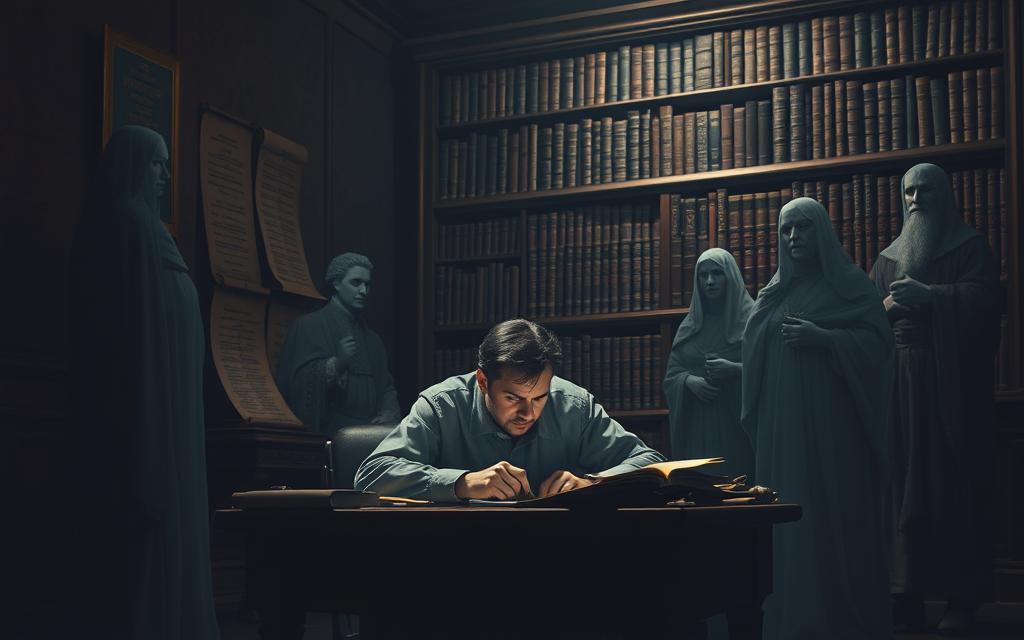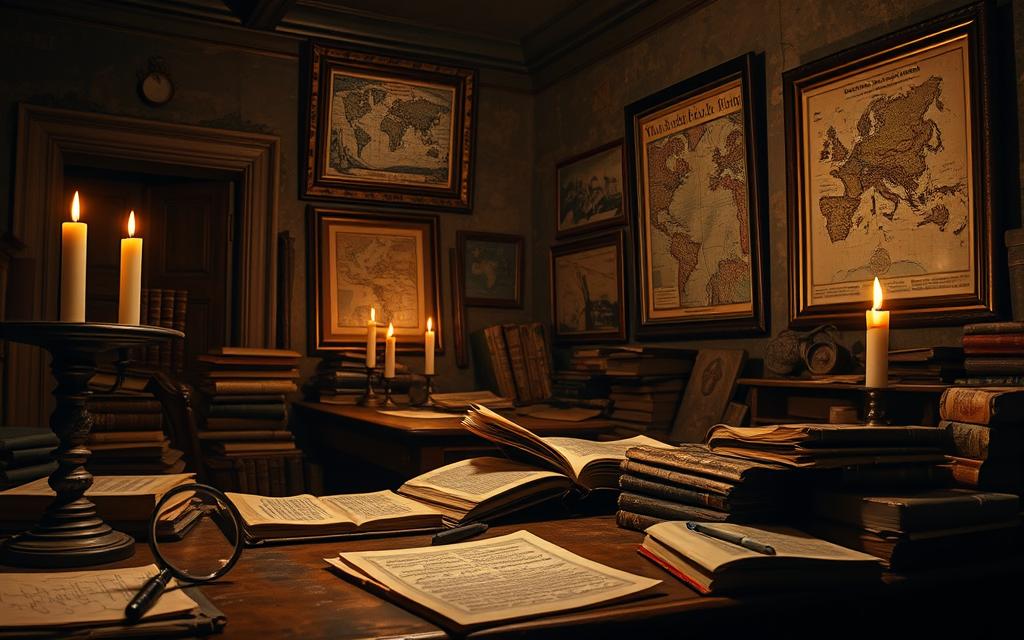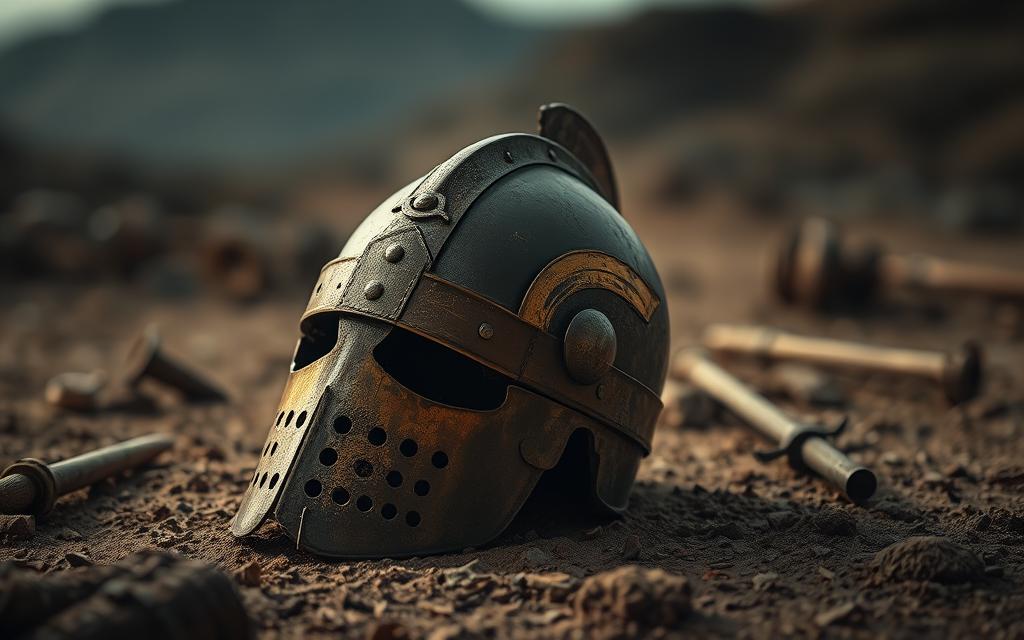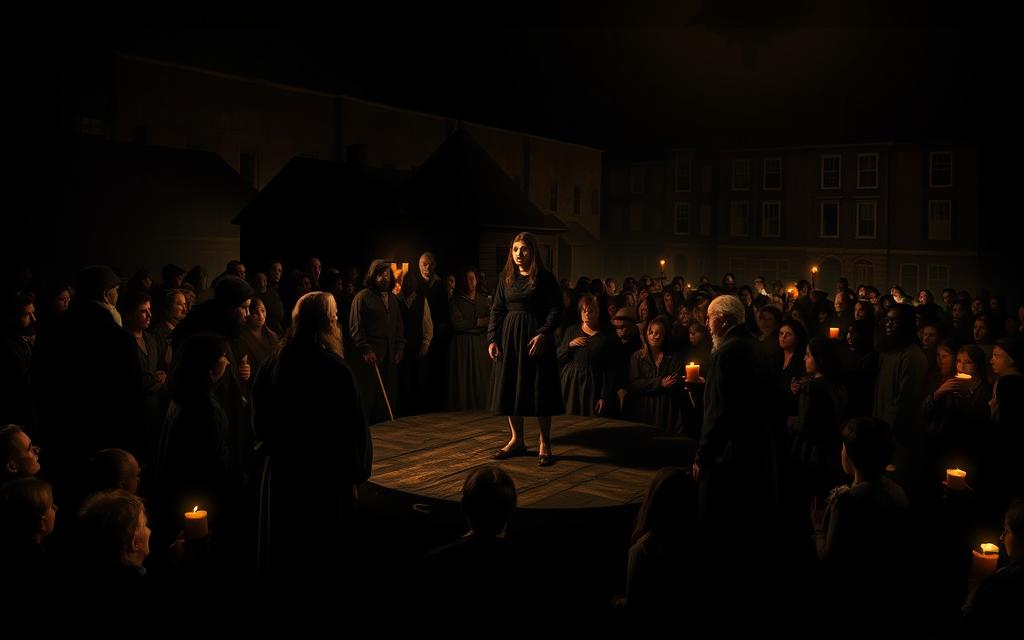Uncovering the truth behind common historical misconceptions can be a fascinating journey. For centuries, historical myths have been passed down through generations, shaping our understanding of the past.
Many of these myths have been debunked by historians, revealing shocking historical facts that challenge our assumptions. In this article, we will explore some of the most enduring historical myths and examine the surprising truths that lie beneath.
By examining these myths, we can gain a deeper understanding of how common historical misconceptions arise and how they can be corrected.
Why We Believe Historical Falsehoods
The persistence of historical falsehoods raises important questions about how we form and maintain our beliefs about the past. Historical misconceptions can be particularly resilient, often becoming ingrained in popular culture.
The Psychology Behind Misconceptions
Our brains are wired to recognize patterns, sometimes leading to the creation of false historical beliefs. This psychological tendency, combined with the influence of social and cultural narratives, can result in the widespread acceptance of common historical myths.

How Myths Become “Common Knowledge”
Myth-busting history requires understanding how these misconceptions spread. Often, it’s a combination of repetition, cultural influence, and the lack of accessible, accurate historical information that turns historical fallacies into “common knowledge.”
By recognizing the factors that contribute to the perpetuation of false historical beliefs, we can begin to uncover the truth behind these myths.
The 5 Biggest Historical Myths: Facts That Will Shock You
Some historical myths are so pervasive that they have become synonymous with historical fact, despite being entirely fabricated. The process of debunking these myths not only reveals the truth but also provides insight into why such misinformation became ‘common knowledge.’

The Pattern of Historical Distortion
Historical distortion often follows a pattern where a kernel of truth is exaggerated or manipulated to fit a particular narrative. This can be due to various factors, including cultural biases, political agendas, or the influence of popular media. For instance, the myth that Viking warriors wore horned helmets has been perpetuated by 19th-century Romanticist artists and later reinforced by Hollywood.
The repetition of such myths in educational materials, literature, and film solidifies their place in the public consciousness. Understanding the mechanisms behind the creation and dissemination of these myths is crucial for a more accurate comprehension of history.
The Real Cost of Historical Inaccuracy
The cost of perpetuating historical inaccuracies extends beyond mere factual error; it can distort our understanding of cultural heritage and influence contemporary societal issues. For example, myths surrounding historical figures or events can shape national identities and inform political decisions. The real cost, therefore, lies in the potential for misinformation to impact our collective memory and future actions.
By debunking historical myths and revealing shocking history facts, we not only correct the record but also foster a more nuanced understanding of the past. This process encourages critical thinking and a more informed engagement with history.
Vikings Never Wore Horned Helmets
The notion that Vikings wore horned helmets is one of the most enduring historical misconceptions. This image has been perpetuated by popular culture, but it is far from the truth.
The Origins of the Myth
The idea of Vikings in horned helmets originated in the 19th century, largely due to the Romanticist movement and the opera “Der Ring des Nibelungen” by Richard Wagner. The costumes designed for this opera featured horned helmets, which were later adopted as the standard image of Viking warriors.
What Viking Warriors Actually Wore
In reality, there is no historical evidence to support the claim that Vikings wore horned helmets. Instead, archaeological findings suggest that Viking helmets were likely simple conical or bowl-shaped.
Archaeological Evidence from Norse Burials
Excavations of Norse burials have uncovered helmets that were plain and unadorned. For example, the Oseberg ship burial in Norway contained a well-preserved helmet that was simple in design.

Horned helmets would have been impractical for battle, as they would have provided additional leverage for opponents to grab or strike. The simplicity of Viking helmets was likely a result of both practicality and the technology available at the time.
By examining the archaeological evidence and understanding the practical considerations of battle, it becomes clear that the image of Vikings in horned helmets is a myth with no historical basis.
The Myth of Widespread Witch Burning in Salem
The Salem witch trials are one of the most enduring and misunderstood events in American history. While popular culture often portrays the trials as a period of widespread witch burning, the reality is more nuanced.
Execution Methods and Numbers
Between 1692 and 1693, twenty people were executed for witchcraft in Salem and surrounding communities. Of these, fourteen were women, and the majority were hanged. Nineteen were hanged, one was pressed to death with stones for refusing to enter a plea, and one died in prison.

The Social and Political Factors Behind the Trials
The Salem witch trials were not just a product of mass hysteria but were also influenced by social and political factors. Land disputes and economic tensions played significant roles in the trials.
Mass Hysteria vs. Land Disputes
The role of mass hysteria in the Salem witch trials is often exaggerated. In reality, land disputes and economic rivalries were significant factors, with many accusations stemming from disputes over property and resources.
The Aftermath and Legacy
In 1706, the Massachusetts General Court declared that the trials were unlawful and offered restitution to the victims’ families. The Salem witch trials have since become a cautionary tale about the dangers of false accusations and mass hysteria.
Einstein Never Failed Math
The notion that Albert Einstein failed mathematics is a widespread myth that has been debunked by historians. This misconception has been perpetuated despite evidence showing Einstein’s academic excellence in mathematics and physics.
Academic Achievements of Young Einstein
Einstein’s academic record reveals that he excelled in mathematics and physics during his school years. His grades and testimonials from teachers confirm that he was a diligent student with a strong aptitude for these subjects.
| Subject | Einstein’s Grade |
|---|---|
| Mathematics | 6/6 |
| Physics | 6/6 |
Why This Inspirational Myth Persists
The persistence of this myth can be attributed to the appeal of the underdog story, where a struggling student achieves greatness. This narrative makes Einstein’s success more relatable and inspiring.
The Appeal of the Underdog Genius Story
The underdog story is a powerful narrative that captivates audiences. It suggests that even someone who struggles can achieve greatness with determination and hard work.
Einstein’s Actual Struggles with Authority
While Einstein did not struggle with mathematics, he did have issues with authority figures in his educational journey. His independent thinking and questioning of established theories sometimes put him at odds with his teachers.
The Great Wall of China Is Not Visible from Space
A common myth surrounding the Great Wall of China is that it can be seen from space, but this is far from the truth. The Great Wall of China, an iconic symbol of China’s rich history, is often cited as being visible from space, but this claim has been thoroughly debunked by experts and astronauts alike.
What Astronauts Can Actually See from Orbit
Astronauts in orbit around the Earth can see a variety of human-made structures, but the Great Wall of China is not one of them. According to NASA, the Wall is not visible to the naked eye from space due to its relatively small width and the fact that it blends in with the surrounding terrain.
The Origin and Spread of This Geographic Myth
The myth that the Great Wall of China is visible from space likely originated from a combination of its historical significance and exaggerated claims. Over time, this myth has been perpetuated through popular culture and misinformation.
NASA’s Official Statements
NASA has officially stated that the Great Wall of China is not visible from space. This clarification has been echoed by astronauts who have traveled to space and seen the Earth from orbit.
Other Human Structures Visible from Space
While the Great Wall of China is not visible, other human-made structures such as large cities, highways, and dams can be seen from space under certain conditions. These structures are typically much larger and more pronounced than the Great Wall.
Marie Antoinette Never Said “Let Them Eat Cake”
The phrase “Let Them Eat Cake” is often attributed to Marie Antoinette, but this attribution is a gross misrepresentation of historical facts. This myth has been perpetuated for centuries, symbolizing the callousness of the French monarchy towards the poor.
The Real Source of the Famous Quote
The phrase “Let Them Eat Cake” (or “Let them eat brioche” in some versions) is believed to have originated from a story written by the French writer and philosopher Jean-Jacques Rousseau when Marie Antoinette was just a child. Rousseau attributed the phrase to an unnamed “great princess” who, upon being told that the peasants had no bread, callously suggested that they eat cake.
Character Assassination in Revolutionary France
During the French Revolution, Marie Antoinette became a focal point for revolutionary propaganda. The queen was vilified in pamphlets, cartoons, and public discourse, often being portrayed as extravagant and indifferent to the suffering of the common people.
Propaganda Against the Monarchy
The propaganda against Marie Antoinette and the monarchy was intense, aiming to delegitimize the royal family in the eyes of the French people. This campaign was part of a broader strategy to undermine the monarchy and pave the way for the establishment of the French Republic.
Marie Antoinette’s Actual Personality and Actions
Contrary to the myth, Marie Antoinette was known for her charitable works and her role as a devoted mother. She was actively involved in the welfare of her children and supported various charitable causes, showcasing a more nuanced character than the one portrayed in revolutionary propaganda.
Historical Myths That Changed World Events
Historical myths have been instrumental in shaping the course of world events, often with lasting impacts. These myths, sometimes based on misinformation or misinterpretation, have led to significant decisions that have altered the course of history.
The Gulf of Tonkin Incident and Vietnam War Escalation
The Gulf of Tonkin incident in 1964 was a pivotal moment in the escalation of the Vietnam War. The myth that a U.S. Navy destroyer was attacked by North Vietnamese naval forces led to the passage of the Gulf of Tonkin Resolution, giving President Lyndon B. Johnson broad powers to conduct military operations in Southeast Asia without a formal declaration of war. This event marked a significant escalation in U.S. involvement in the Vietnam War, leading to widespread conflict and social unrest.
Weapons of Mass Destruction in Iraq
Another significant historical myth was the claim of Weapons of Mass Destruction (WMDs) in Iraq, which was used to justify the 2003 invasion of Iraq. The intelligence suggesting the presence of WMDs was later found to be inaccurate, leading to a protracted and controversial conflict. The consequences of this myth have had long-lasting effects on global politics and international relations.
How Historical Narratives Shape Military Decisions
Historical narratives and myths can significantly influence military decisions. The perception of threats, based on sometimes flawed or outdated information, can lead to preemptive actions or escalations. Understanding the historical context and verifying the accuracy of information is crucial in preventing the repetition of past mistakes.
The Long-term Impact of Historical Falsehoods
The long-term impact of historical falsehoods can be profound, affecting not only the immediate course of events but also shaping future policies and international relations. A clear understanding of historical facts is essential for making informed decisions and avoiding the pitfalls of misinformation.
| Historical Myth | Consequence | Long-term Impact |
|---|---|---|
| Gulf of Tonkin Incident | Escalation of Vietnam War | Widespread social unrest and changes in U.S. foreign policy |
| Weapons of Mass Destruction in Iraq | 2003 Iraq War | Prolonged conflict, regional instability, and shifts in global politics |
Pop Culture’s Role in Perpetuating Historical Myths
The influence of pop culture on our understanding of history is profound, often blurring the lines between fact and fiction. Pop culture, particularly through Hollywood films, has a significant role in shaping our perceptions of historical events.
Hollywood’s Historical Revisions
Hollywood has a long history of revising historical events to make them more entertaining. Films like “Braveheart” and “Pocahontas” are prime examples where historical facts were altered for the sake of drama and box office success. While these films are engaging, they often leave viewers with a distorted understanding of historical events.
When Entertainment Becomes “Education”
When historical films become blockbusters, they often masquerade as educational content. Many viewers, especially students, might rely on these films as a primary source of historical information, unaware of the creative liberties taken by the filmmakers.
Braveheart, Pocahontas, and Other Historical Films
Films like “Braveheart” and “Pocahontas” have become synonymous with certain historical periods, yet they are far from accurate. “Braveheart,” for instance, portrays William Wallace as a hero in a way that is more myth than reality. Similarly, “Pocahontas” simplifies and distorts the complex interactions between the Powhatan tribe and English colonists.
| Film | Historical Accuracy | Impact on Public Perception |
|---|---|---|
| Braveheart | Low | High |
| Pocahontas | Low | High |
| Schindler’s List | High | High |
The Responsibility of Media in Historical Portrayal
Media has a significant responsibility in portraying historical events accurately. While entertainment is a valid goal, it should not come at the expense of historical truth. Filmmakers and writers should strive to balance drama with accuracy to educate as well as entertain.
Why We Cling to Debunked Historical “Facts”
Despite overwhelming evidence to the contrary, many of us continue to cling to historical ‘facts’ that have been thoroughly debunked. This phenomenon is not just about ignorance or misinformation; it’s rooted in deeper psychological and social factors.
Cognitive Dissonance and Historical Beliefs
Cognitive dissonance plays a significant role in our reluctance to let go of debunked historical facts. When new information contradicts our existing beliefs, it creates discomfort. To alleviate this, we often reject the new information or rationalize it to fit our pre-existing views.
For instance, if someone has always believed that George Washington chopped down a cherry tree, being told that this story is likely apocryphal can cause discomfort. Rather than accepting the new information, they might cling to the original story.
National Identity and Founding Myths
National identity and founding myths also contribute to our attachment to historical narratives. These stories often serve as foundational elements of a nation’s identity and are deeply ingrained in cultural consciousness.
The Washington Cherry Tree Story
The tale of George Washington and the cherry tree is a classic example of a founding myth that has become integral to American folklore. Although its historical accuracy is dubious, it continues to be told as a way to illustrate Washington’s honesty.
The First Thanksgiving Narrative
Similarly, the narrative of the First Thanksgiving, while simplified and distorted over time, remains a crucial part of American cultural heritage, symbolizing friendship and cooperation.
How Historians Actually Uncover Historical Truth
Historians employ a range of rigorous methods to uncover historical truth, debunking myths and revealing new insights. This process involves a combination of traditional research techniques and modern technological advancements.
The Methods of Modern Historical Research
Modern historical research is characterized by a multidisciplinary approach, incorporating insights from sociology, anthropology, and archaeology. Historians now have access to a wide array of tools and methodologies that enable them to analyze historical data more accurately. Digital archives have revolutionized the field, providing unprecedented access to primary sources and historical documents.
Digital Archives and Accessibility of Primary Sources
The advent of digital archives has significantly enhanced the accessibility of primary sources, allowing historians to conduct more thorough and nuanced research. These digital repositories contain a vast array of historical documents, photographs, and other materials that were previously difficult to access.
Cross-Referencing Multiple Sources
One of the key techniques in historical research is the cross-referencing of multiple sources. By comparing different accounts and documents, historians can piece together a more accurate picture of historical events. This method helps to identify biases and inconsistencies in the historical record.
The Role of Archaeology in Verifying Written Records
Archaeology plays a crucial role in verifying the accuracy of written historical records. Excavations and archaeological findings often provide tangible evidence that supports or challenges the narratives found in written sources, thereby enriching our understanding of the past.
Conclusion: Why Historical Accuracy Matters Today
Understanding the past is crucial for navigating the present and shaping the future. As we’ve seen, historical myths can distort our perception of history, leading to a flawed understanding of the world. By debunking these myths and striving for historical accuracy, we can gain a more nuanced appreciation of the complexities that have shaped human societies.
The importance of history lies not only in its ability to inform us about past events but also in its capacity to provide context for contemporary issues. Myth-busting is an essential part of this process, as it allows us to separate fact from fiction and to challenge prevailing narratives.
By promoting accurate historical information, we can foster a deeper understanding of the past and its relevance to our lives today. As we continue to grapple with the challenges of the 21st century, it is more important than ever to approach history with a critical and nuanced perspective.






